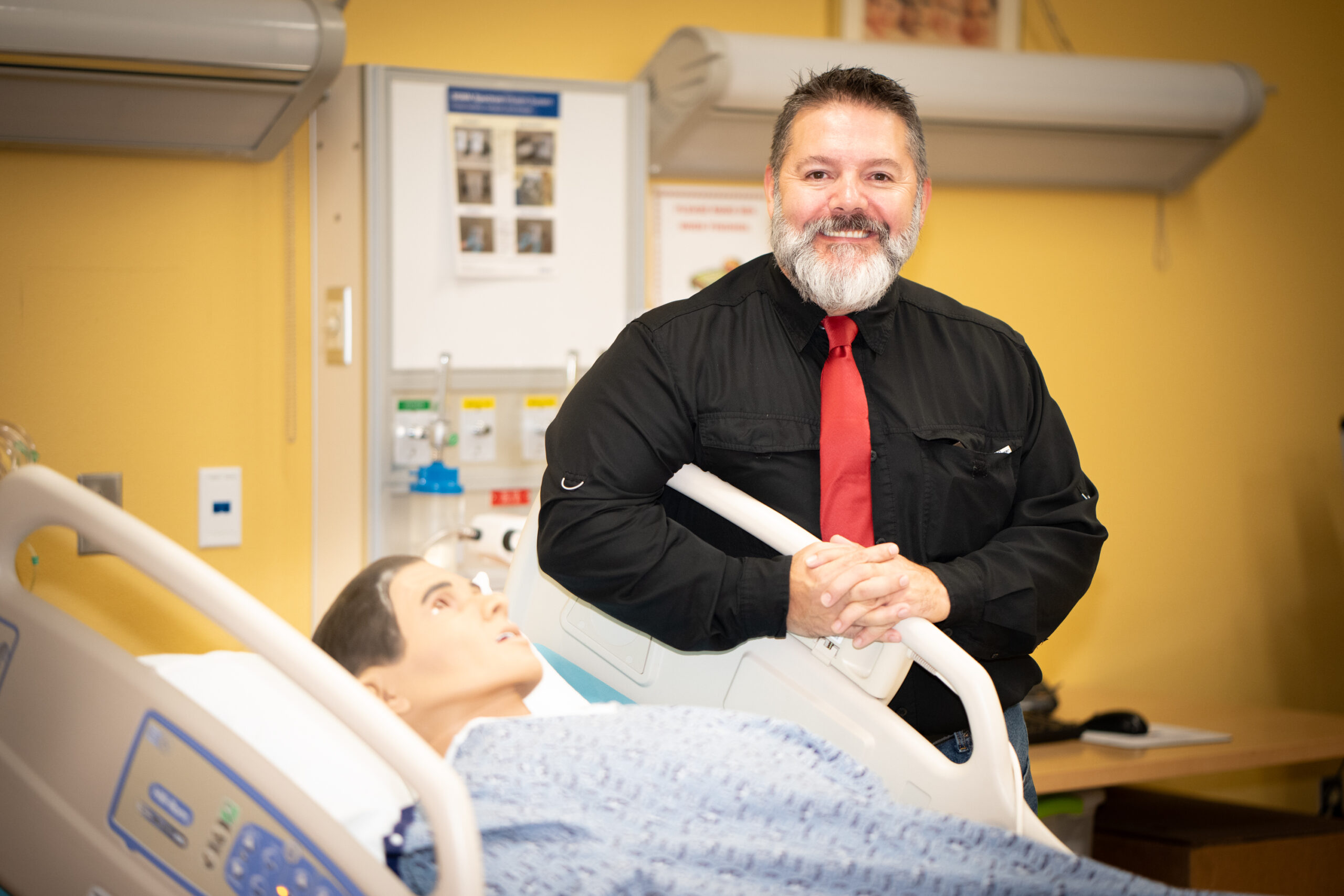A new and original methodology for nursing education developed at Western New Mexico University (WNMU) is poised to change how student competency is measured and improved. Lorenzo Saenz is the Nursing Lab Simulation Coordinator at WNMU School of Nursing and Kinesiology. Saenz presented his innovative framework at the Gulf Coast Healthcare Simulation Conference in Mobile, Alabama, on October 3, 2025.
Saenz’s presentation detailed a new approach that uses Performance Reference Points (PRP) to objectively track a nursing student’s skill level through longitudinal data. This system moves beyond traditional pedagogy, where a student learns a skill, tests on it, and may not use it again for months. The PRP framework allows educators to assess whether a student is in one of three states of competence: progression, stagnation, or degradation. By understanding where each student is, instructors can tailor simulations to shore up weaknesses or introduce new challenges, ensuring continuous readiness.
“Traditional education models don’t allow us a consistent way to determine a student’s true level of competence over time,” Saenz explained. Research shows that without practice learned skills can degrade in as little as six weeks. The methodology Saenz designed keeps students from sliding into that degradation, ensuring they are always ready for a clinical setting.
“We want simulations that have a rigor appropriate to the student’s level,” Saenz noted. The new methodology allows WNMU instructors to truly assess individualized student competency: when to do something, how to do it safely, why it works, and how to verify its efficacy. “We must teach and assess students in the same environment they will be working in,” he stated. “At WNMU, we have operationalized stress and can scaffold the difficulty of each simulation in an objective manner.”
With some of the most sophisticated simulation robots available, WNMU provides the perfect laboratory for this work. Saenz’s ultimate vision is to see this methodology adopted by the 16 New Mexico schools in the nursing consortium, and eventually across the nation.
“I can’t teach students what to think. That’s impossible,” Saenz concluded. “I set them up with a framework for how to think for themselves. In the lab, I tell them not to be afraid of failure. If you don’t make the mistake here, we can’t learn from it. At WNMU, we walk a greater distance with our students, and this framework is another way we ensure they are prepared for success.”
Born and raised in Bayard, New Mexico, Saenz’s journey in creating the new methodology is a story of purpose forged in experience. The catalyst for his medical career came from a moment of helplessness on a job. “One of the workers next to me had a seizure, and I didn’t know what to do and I felt powerless,” Saenz recalled. After the incident with his co-worker, Saenz met with an Army recruiter. Saenz was determined to ensure he could always help people in distress so he served as a combat medic in the U.S. Army’s prestigious “Big Red One” mechanized infantry unit.
After his military service, Saenz worked for a Mobile Training Team, using high-fidelity simulators to assess the competency of Army medics in realistic, high-stress field environments. This experience planted the seed for his work at WNMU.
“I am filled with absolute gratitude for WNMU and the School of Nursing and Kinesiology for being willing to take a gamble on an unproven idea,” Saenz said. “They gave me the latitude to try something new, to build a method where students address the patient first and use their clinical judgment.”




